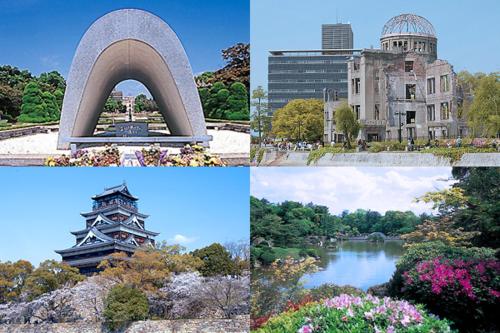Mitaki-dera Temple
menuMenu
One of Hiroshima's most scenic and spiritually powerful spots. A temple located atop a rocky mountain surrounded by three waterfalls, boasting stunning architecture including a pagoda.






Highlights
- One of Hiroshima's most scenic and spiritually powerful spots
- Three waterfalls with distinct water flows
- Vermilion pagoda
- Commemoration of atomic bomb victims
- Designated as an Important Cultural Property of Hiroshima Prefecture
Basic Information
- Address
- 411 Mitakiyama, Nishi-ku, Hiroshima City, Hiroshima Prefecture Search for tourist attractions in Hiroshima
- Access
- About a 20-minute walk from Mitaki Station on the JR Kabe Line. Alternatively, take Hiroshima Bus Route 22 bound for "Mitaki Kannon" and get off at the terminal stop. Show route
- Op.Hours
- 8:00 AM to 5:00 PM
- Cld.Days
- Open every day
- Fee
- Admission fee: 300 yen for adults, 150 yen for children
- INFO
- Parking available
Overview
Recommended nearby attractions
Saihoji Temple

A charming temple offering stunning views of Takehara townscape, famously used as a filming location for the movie 'Toki wo Kakeru Shoujo' ('The Girl Who Leapt Through Time').
Mount Misen

A sacred mountain offering stunning views of the Seto Inland Sea. Enjoy magnificent scenery from the summit observation deck.
Fudoin Temple

Fudoin Temple, known for guarding the hidden gate (kimon) of Hiroshima Castle, is a historic temple established by Fukushima Masanori, the lord of Hiroshima.
Itsukushima Shrine

A mystical World Heritage site with a vermillion torii gate floating on the sea.
Sandankyo Gorge

A premier sightseeing spot in Hiroshima Prefecture, offering spectacular natural beauty and gorge scenery.
Shofukujiyama Park

A park boasting stunning views of the Seto Inland Sea. In spring, the park is awash with cherry blossoms, creating a breathtaking spectacle of pink.
Sankeien Garden

A beautifully landscaped, nature-filled area within walking distance of Hiroshima Airport, perfect for a relaxing stroll. Highlights include a charming bridge over a pond with carp, and a waterfall cascading with a refreshing spray.
Shukkeien Garden

A tranquil oasis where you can escape the city bustle and enjoy a leisurely stroll. Its beauty changes with each season.
Dosha Dam

In spring, 6,000 cherry blossoms bloom, painting the lakeside a vibrant pink.
Mount Kogan (Kogan-yama)

A breathtaking viewpoint offering panoramic views of Hiroshima City! Enjoy beautiful scenery throughout the year, including cherry blossoms and autumn leaves.
Nearby Hotels
Hiroshima Peace Hotel

CASA VIENTO STAY INN

Guest House com inn Hiroshima

Hiroshima Hostel EN

HOTEL CLA-SS HIROSHIMA-TOKAICHI

Hiroshima Peace Park Hotel

36 Hostel

Laforet Tokaichi

THE EVERGREEN HOSTEL

Guesthouse Hiroshima Mange Tak

